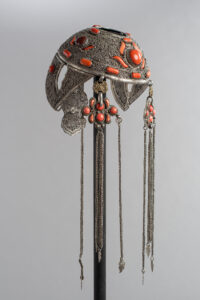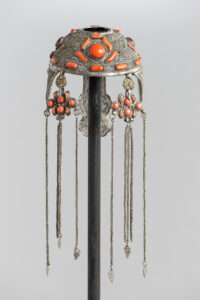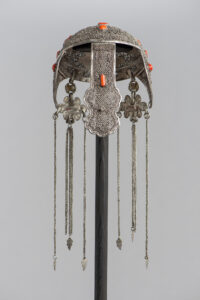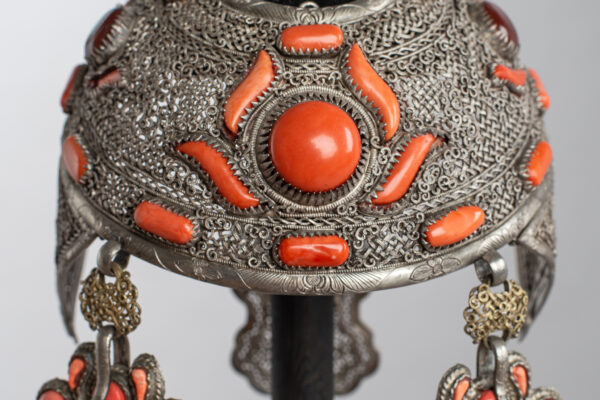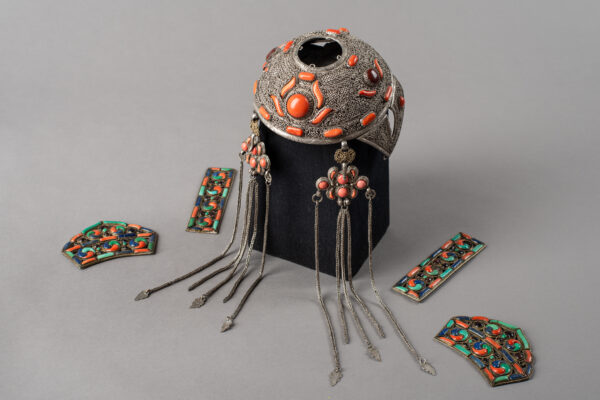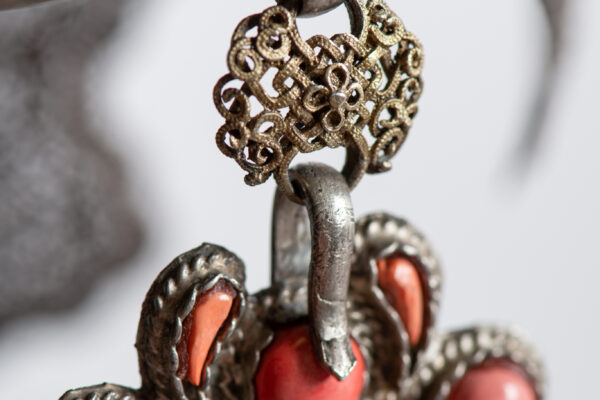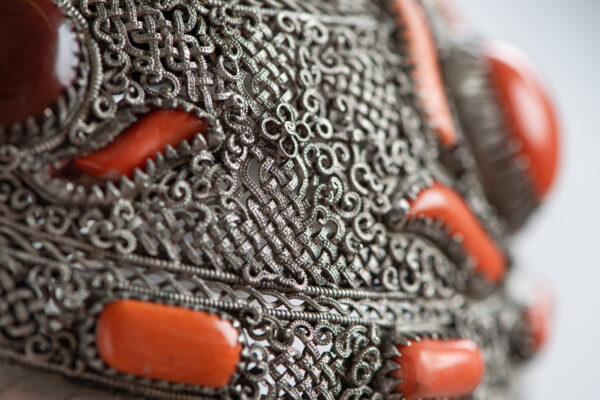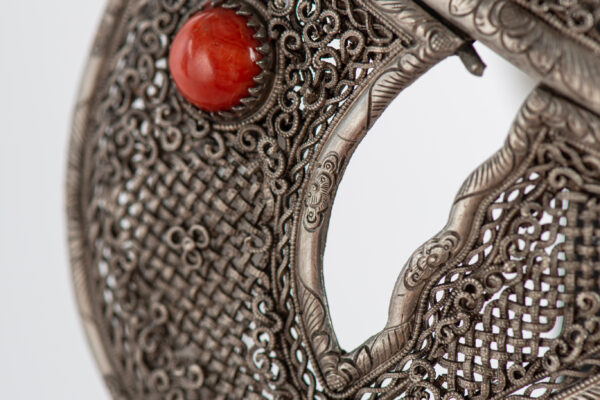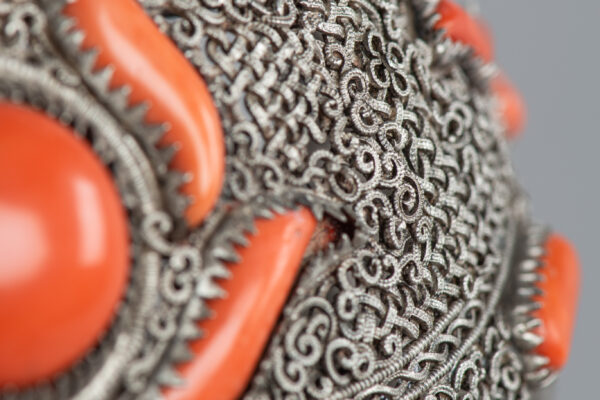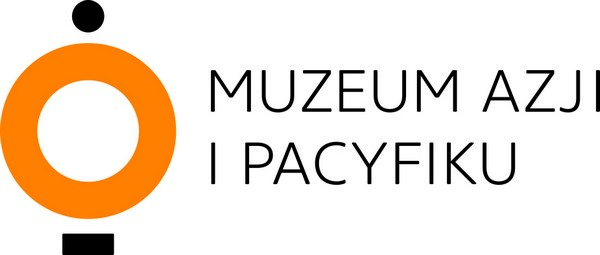Married Mongolian woman’s bonnet
Every month curators of the Asia and Pacific Museum carefully select one object representing various parts of our new permanent exhibition “Journeys to the east” through the cultures of the Middle East, Central Asia, Mongolia and Indonesia, to which we will invite You as early as 2022.
In May we pay particular attention to a silver bonnet (its proper name without the other elements of the set is: oroivch) worn until the interwar period by married women from the Khalkha ethnic group (Mong.: “the Shield”) dominant in Mongolia.
The set includes attached, but movable elements: pendants at the temples, an elongated neck, and triangular wings on either the sides of the head. The bonnet is made in the technique of filigree (twisted wire) – so it is stiff, openwork net, also with some fragments of thin plate soldered on the inside. The net is entirely composed of loops and spirals with the so-called endless knot motifs (or the infinite thread of happiness; in the shape of a rhombus composed of diagonal mesh) interwoven in between. The outer surface is planted mostly with natural corals and some agates. The corals above the forehead are arranged in a stylized lotus flower.
Both the lotus and knot are symbolic motifs related to Buddhism, professed in Mongolia since the 16th c., along with native shamanism. The lotus symbolizes purity as well as Buddha’s cognitive powers, and like the endless knot, is one of the symbols that are believed to bring good luck (they belong to the set of Eight Auspicious Buddhist Symbols).
The bonnet was worn with a characteristic hairstyle: long hair pinned up in two arches (so-called horns), larger than the head itself, reaching far to the sides and down to the shoulders. They were framed by at least one pair of decorative rectangular hairpins (often two pairs, sometimes many ones), and at the ends – similarly decorated trapezoidal hairpins. Sometimes the set was completed with silver sleeves at the ends of extremely long hair. A small, conical cap with a rim was worn with the bonnet.
The custom of wearing such bonnets and these sumptuous hairstyles by married Khalkha women was eradicated by the revolution and the great terror in Mongolia (including mass persecution of religion and tradition and confiscation of goods) in 1937-39.
Married Mongolian woman’s bonnet – Mong. tolgoy polt
Mongolia, the Khalkha people, 2nd half of the 19th century
silver, natural coral, agate
filigree, silver forging, soldering, planting with semiprecious stones
MAP 5384
Photo by Łukasz Brodowicz / the Asia and Pacific Museum

![grafika z tekstem [journeys to the east]](https://www.muzeumazji.pl/maip/uploads/2022/08/baner_strona_english_tn-1140x220.jpg)


